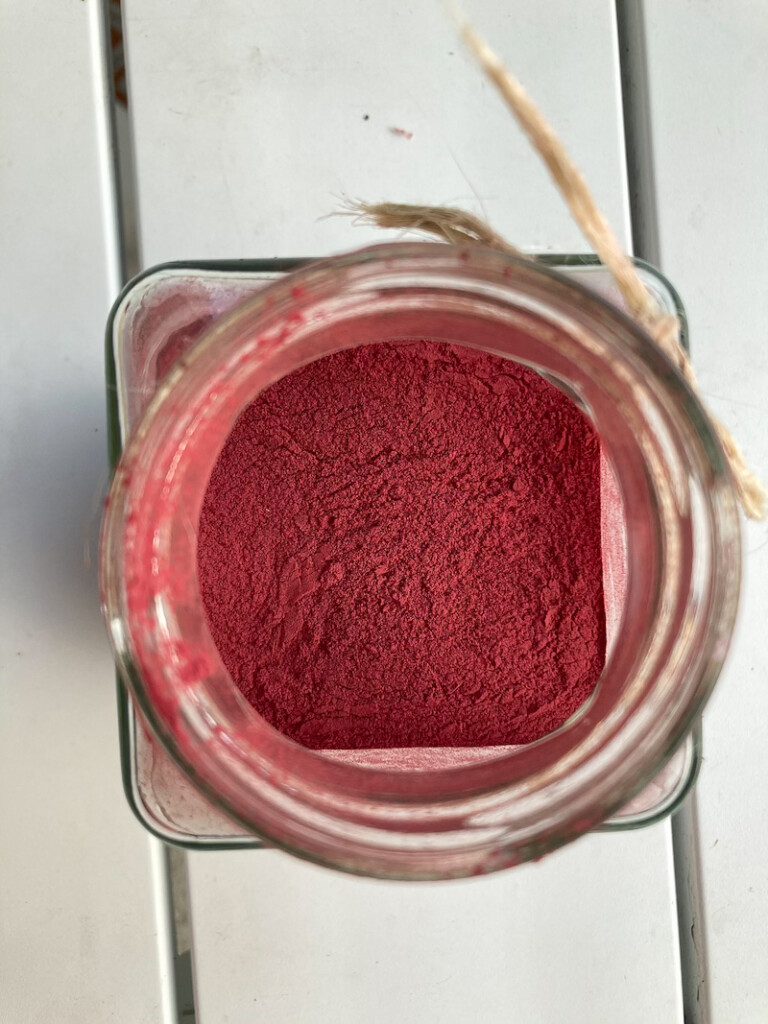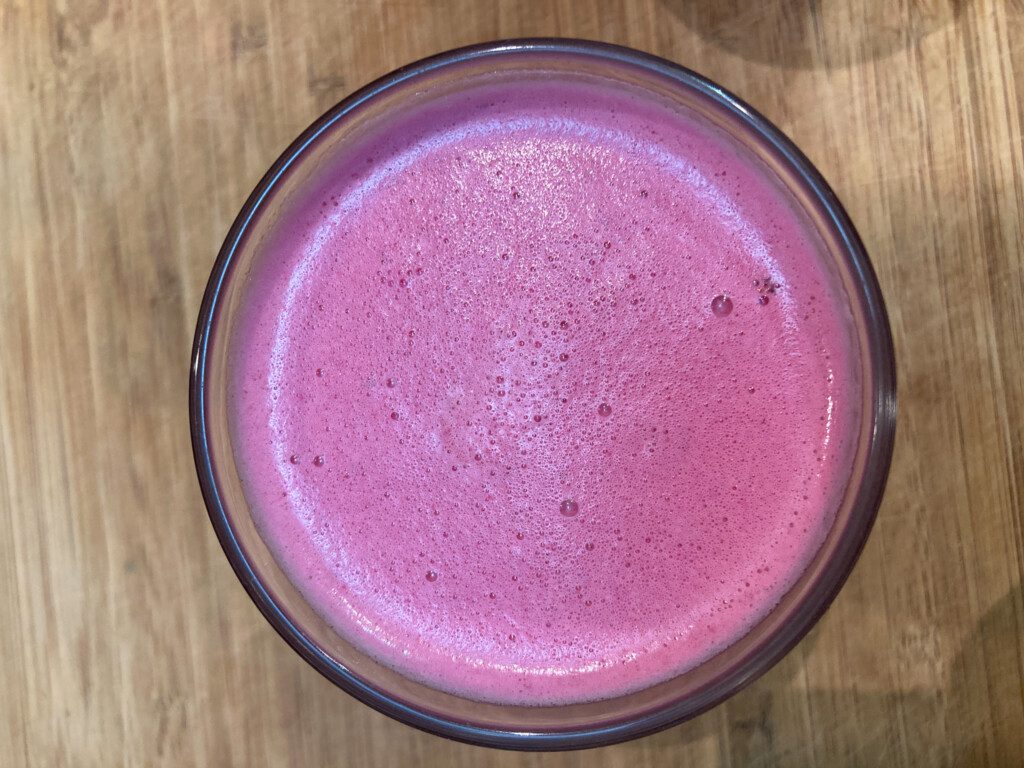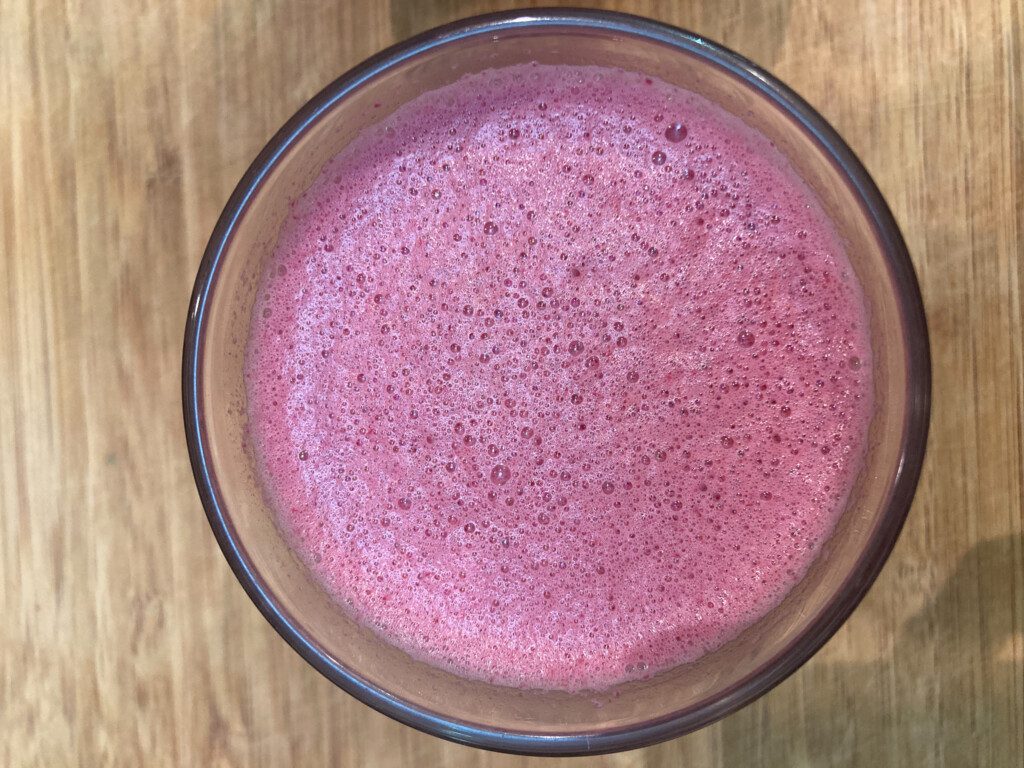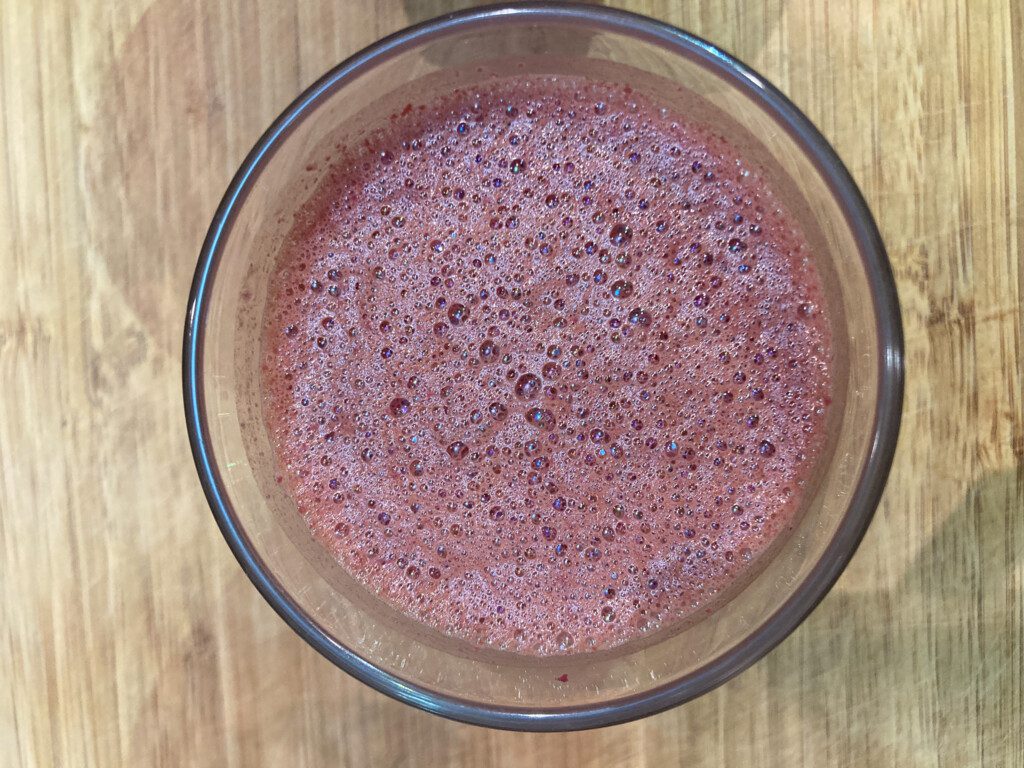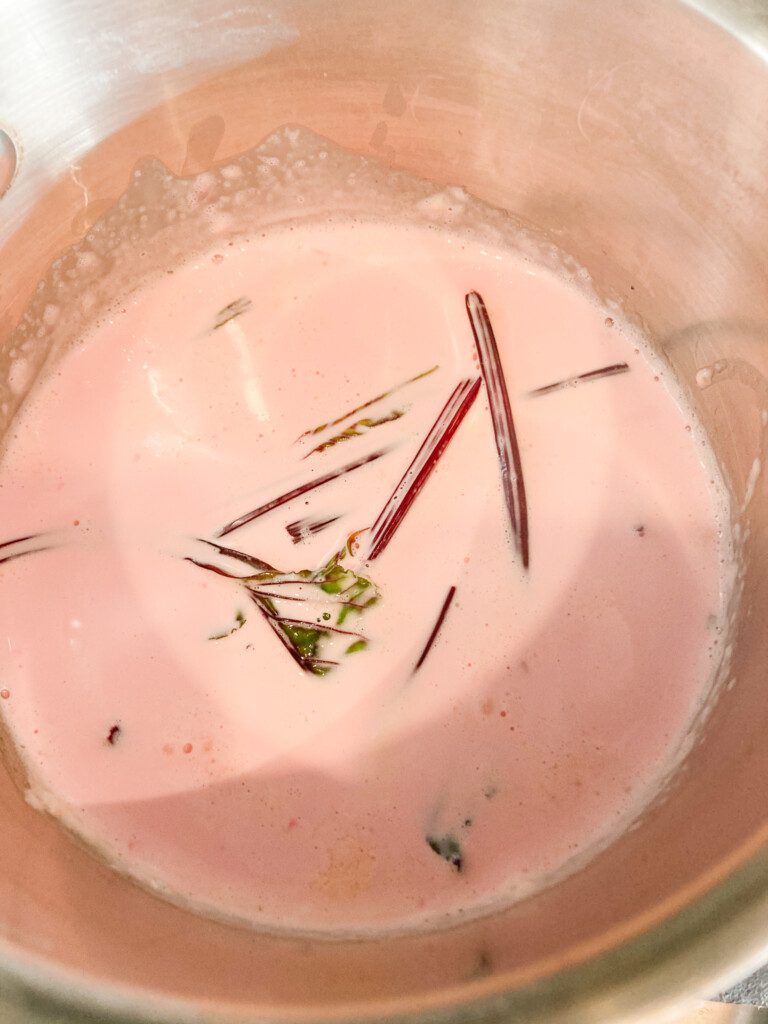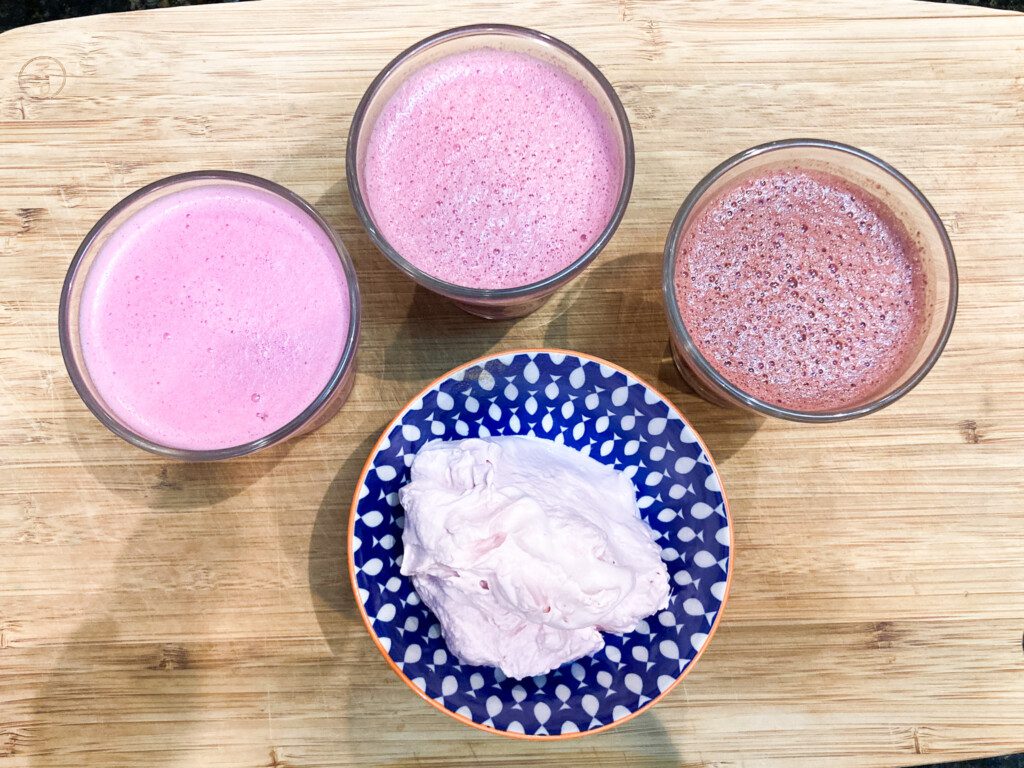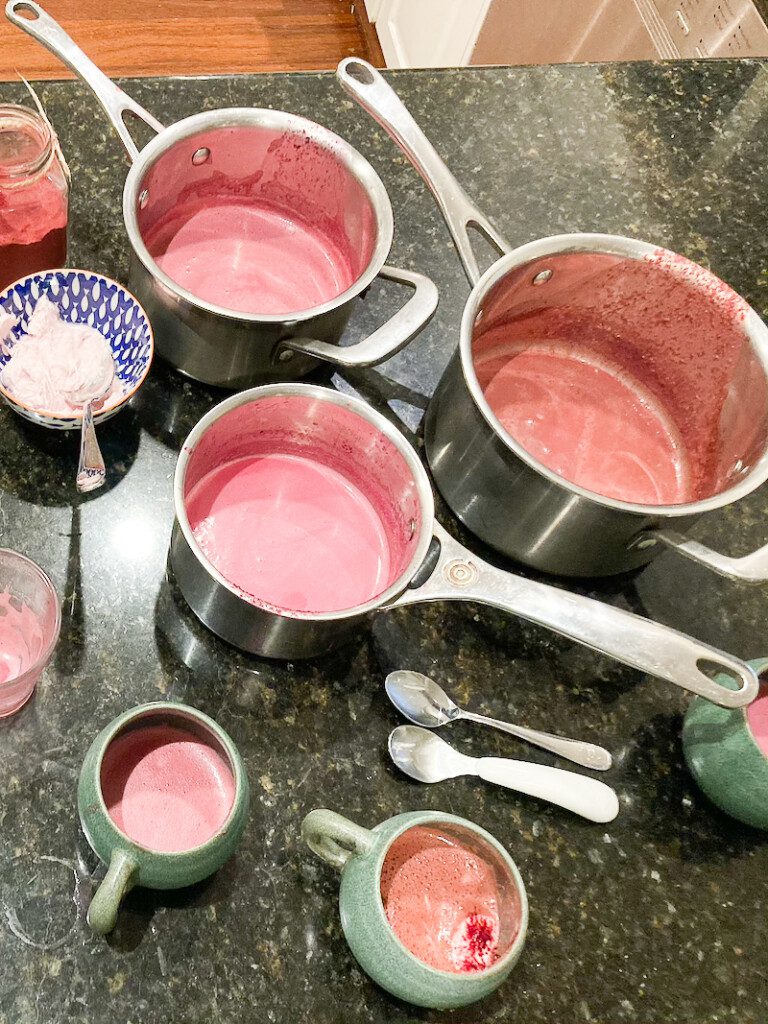I never seriously considered adding beetroots to a hot chocolate until a couple of weekends ago when I tried one again. I knew it was a thing. It just wasn’t my thing. Last weekend I decided to give it a try at home. I bought a bunch of fresh beetroots from the farmers market and a bag of ridiculously overpriced organic beetroot powder from the supermarket and set out to do a few experiments at home.
What is a beetroot?
It’s a red/purple/white/yellow ball with long red stalks and green leaves. You can eat it raw or cooked and every part of it is edible. When buying them, choose ones that are roughly the same size (so that they cook in the same time). For my recipes I used red ones which are the easiest to find usually. They should be firm and smooth and bright in colour. Once you get home, cut off the stems, leaving an inch or two attached to the root. The leafy top is bitter but tasty in a salad or cooked. Eat these within a day or two. The beetroots themselves can be stored for a couple of weeks in the fridge. Beetroots are easy to grow and overall, a very sustainable little package (or not so little, the biggest beetroot was 23.4kg. Mine are the size of large eggs). Fresh, pickled, roasted, boiled, juiced, there are a lot of things you can do with beetroot, including making a hot chocolate.
Why is everyone eating beetroot?
I’ve been eating beetroot for years because they are tasty. I love roasted beetroot in a salad with feta, a sprinkle of fresh herbs, a squeeze of lemon, sprinkle of olive oil, salt and pepper. (Spoiler…after 2 days of testing, that is still my favourite way of enjoying beetroot, but please, read on). A growing number of people, however, eat it because it is healthy. I never realised that beetroot is actually the medical miracle we have all been waiting for. It is said to suppress the development of some types of cancer. It may lower blood pressure and improve digestive health and it may be anti-inflammatory. Some athletes drink beetroot juice to improve performance. It also may give you pink pee (a health benefit in my kid’s eyes). The list keeps going. Apparently, it will cure a hangover and dandruff, was used as a hair dye in the 16th century and a cheek and lip stain in the 19th century. The Romans and. Greeks considered it an aphrodisiac (move over chocolate). It is also used as a colouring and makes red foods (such as tomato juice) look even redder. Twenty percent of the world’s sugar also comes from beets (which, interestingly, require 4 times less water than sugar cane production).
So, I bought some beets. Now what?
Chop off the top (leaving about an inch of stem attached to the beetroot and saving the leaves and stems to make a salad, for example). Give the beetroots a rinse. I wrap each beetroot in aluminum foil and place them on a baking tray in the oven at 200C. If your beetroots are very big, like the size of baseballs or bigger, I usually cut them in half, just to save a bit of time. Cooking time really depends on the size of the beetroot. Tennis ball sized beetroot will take about 40 minutes. They are ready when you can poke a knife in and it goes through like butter.
Take them out of the oven and allow to cool. Once cool enough to handle, gently rub off the skin using the aluminium foil (without getting your hands red). Put the peeled beetroot into a food processor or blender and blitz. You don’t need a lot for the hot chocolate, so if you think you roasted enough, save some intact to make a salad. Note that even if you try your best to avoid it, chances are your hands will stain red from handling the beetroot. Scare your kids/friends/neighbours and then just wash your hands. It will fade away after a few washes.
What about the powder?
Most cafes don’t use fresh beetroot but powdered beetroot. Yes, it was much easier to take a spoonful of beetroot powder and add it to your hot chocolate. But the powdered beetroot, apart from being expensive doesn’t have as much of the earthy flavour of a freshly roasted beetroot. It doesn’t taste as beetrooty so the idea is you get the colour and the health benefits without the flavour. I guess it depends if you like beetroot flavour or not! The powder is such a gorgeous, vibrant colour! I’ve used it now to make little batches of beetroot hot chocolate for friends to try out (since it is a bit messy to give them the fresh beetroot puree).
Is this my new favourite hot chocolate?
No. Sorry. I prefer to eat my beetroot than to sip it. But I did enjoy the earthy notes and it produced a richer hot chocolate which was pleasant. Would I make it again? Absolutely yes but mostly because it turned the hot chocolate such a beautiful array of pinks that this is the perfect trick for when kids come over. It is also another way to recreate the blood red hot chocolates that the Mayan used to make using achiote seeds which I have here but are usually more difficult to source depending where in the world you live.
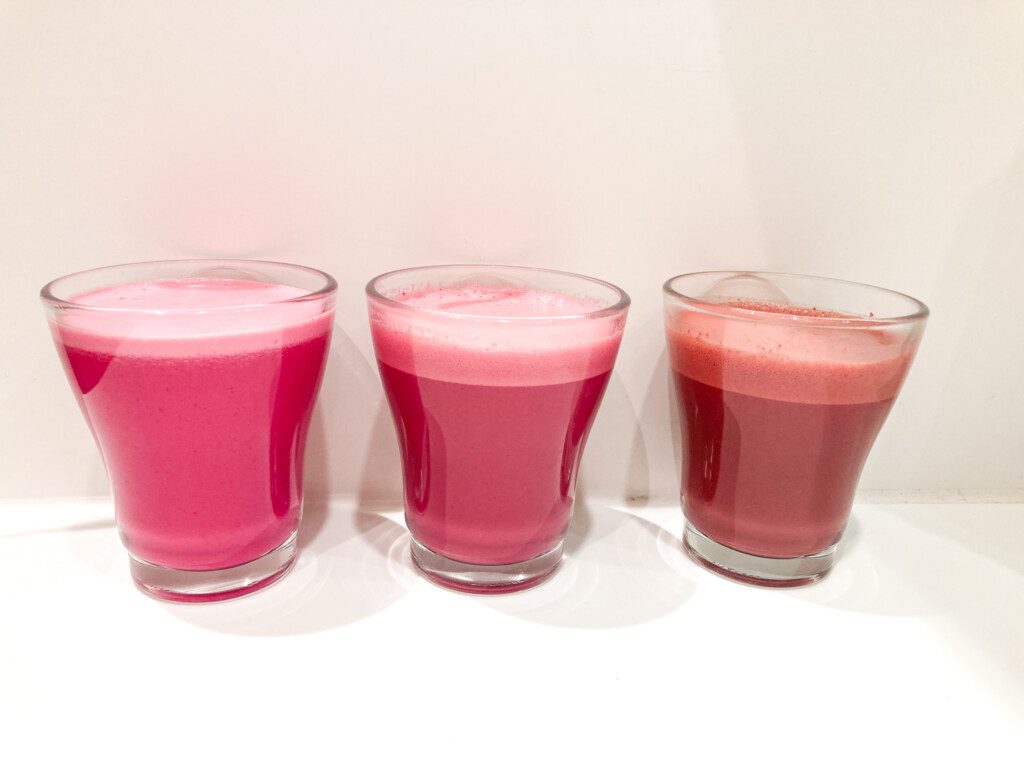
The recipe?
I don’t have one of those snazzy recipe templates set up yet on my blog (its coming!). So, until then, here are some tips:
- Make yourself a mug of hot chocolate, whatever you usually do whether that is chocolate or powder. I used 35 g dark chocolate (70%) and 1 cup of whole milk. I also tried it with white chocolate and milk chocolate (same ratios).
- Make your hot chocolate first and then add the beetroot puree (and warm it back up). I used 2 tbsp of beetroot puree for one mug of hot chocolate, but I’d recommend starting with 1tbsp and then adding more depending on taste.
- Mix the hot chocolate together really well. I blitzed mine and then strained it.
- Since I had all that fancy beetroot powder, I sprinkled a little on top for a nice finishing touch.
- You can freeze extra beetroot in an airtight container for up to eight months if you want to have beetroot hot chocolate all the time.
But wait! There’s more!
Remember those bright red stalks you cut off? If you take a handful of them and place them in a bowl with whipping cream and leave it for a few minutes, they will turn your whipping cream pink! When it is pink enough, just strain the stalks out and whip up your cream. I also tried making a whip cream with the leaves for a full beetroot experience, but it just tasted like grass whip cream which, if that is your thing, is pretty cool.
Now, who is doing the dishes?




